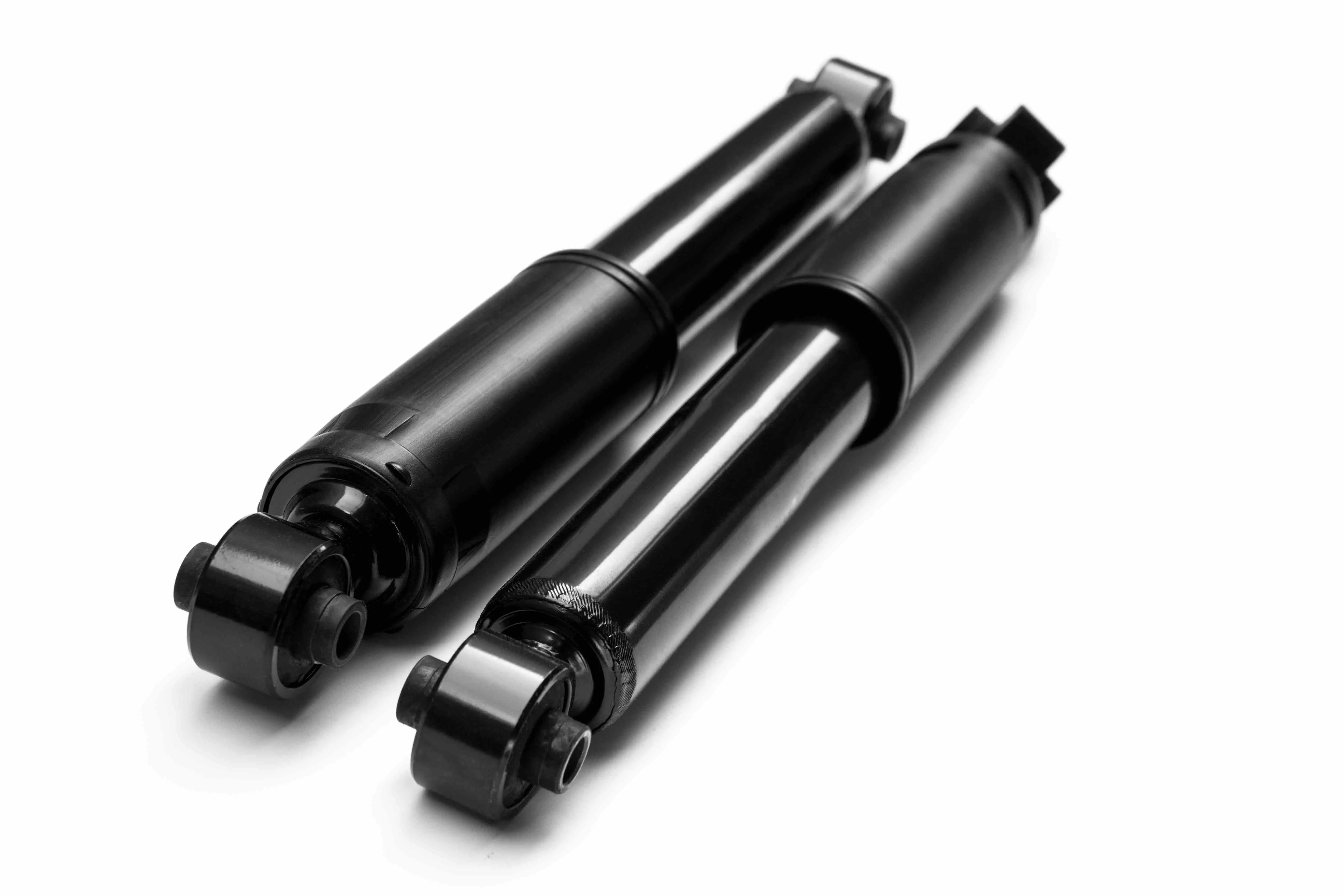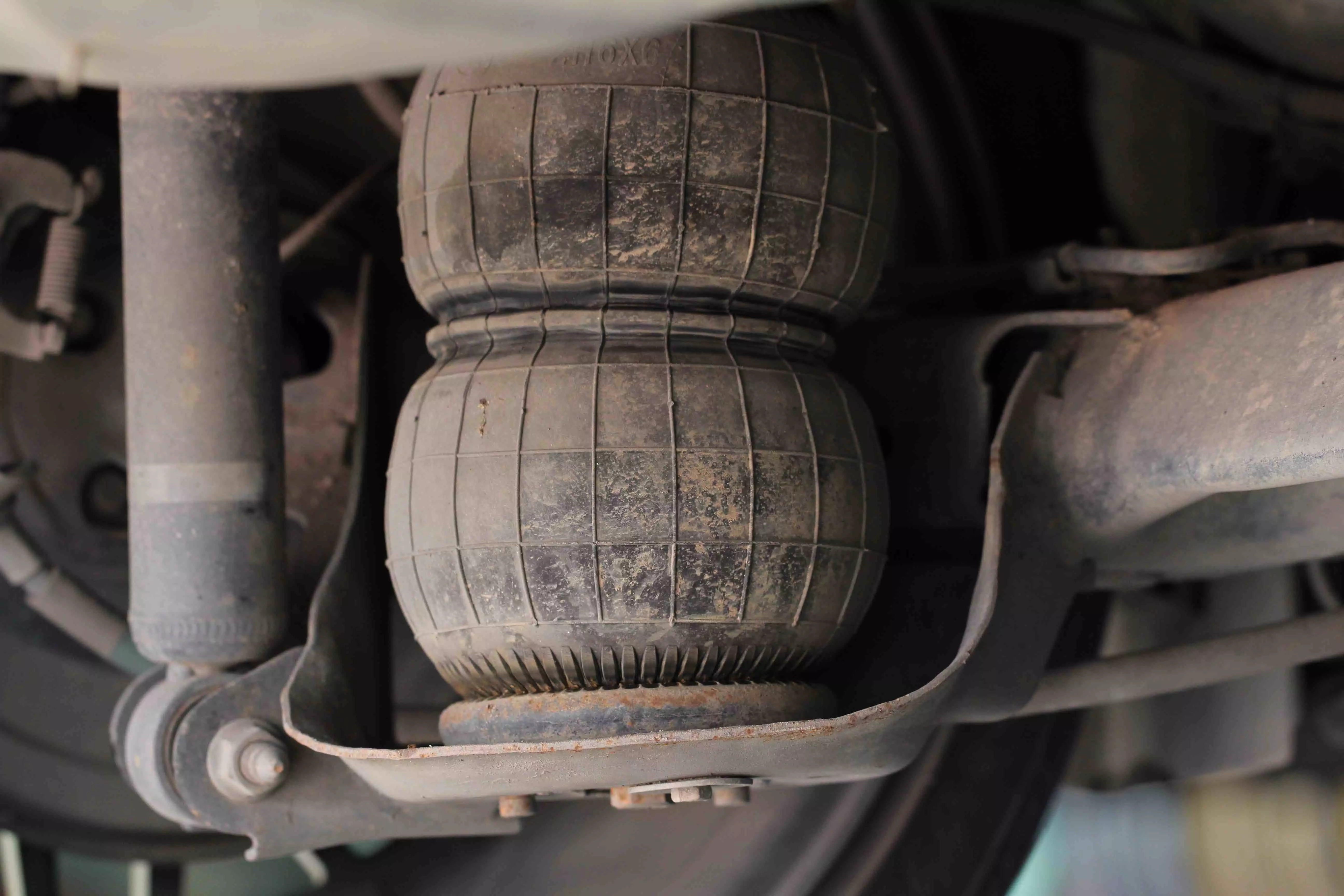
Spread your fingers on both hands and press down gently on your car’s front wing. The car may sink a little before rising again but without bouncing. That’s the suspension working.
Designing an effective suspension system is as much an art as it is a science. Lots of compromises must be made between ride quality and handling performance, the former being how comfortable the car is and the latter, how well it remains stable and controllable at speed.
What’s in a car’s suspension system?

Springs
Most modern car suspension systems use steel coil springs – one per wheel. However, if you look under an older car or a pick-up truck, instead of springs you’ll see narrow strips of metal stacked one on top of the other. These are leaf springs.
Another type of spring doesn’t actually look like a spring at all. It’s called a torsion bar. It’s a long piece of metal attached to the car at one end and to the rest of the suspension system at the wheel end.
When the car hits a bump, the suspension moves, causing the bar to twist and absorb the energy. It helps to contain all those centrifugal forces that act on the car’s body in a corner, making it lean, which is why it’s often called an anti-roll bar.
Learn about a car’s suspension geometry here
Shock absorbers
A spring is good at compressing and absorbing energy but not so good at releasing it, when it tends to rebound uncontrollably. In a car, that uncontrolled action would ruin its ride and handling.
This is where the shock absorber, or damper, comes in. It looks like a thick, stubby bicycle pump. Depending on the type of suspension it either sits close to the coil spring or actually inside it, when it’s also known as a strut.
Whatever the type of damper, its job is to release the spring’s energy in a controlled manner. Most are in two sections. The top section is called the outer tube. It is connected to the car’s frame and contains a piston (it looks like a plunger).
The lower half, called the reserve tube, is bolted to the axle, or to the structure that carries the suspension system. It is filled with hydraulic fluid.
As the car goes over a bump, the axle rises, compressing the spring and forcing the piston to move down into the fluid. This motion forces the fluid upwards and through small holes in the piston.
However, the next moment, the piston is rising back up as the spring rebounds, at which point the fluid changes direction and returns to the reserve tube. All this flow of fluid creates a lot of pressure in the damper, slowing the piston and in turn, slowing the compression and rebound of the spring.
When a damper begins to wear out, fluid can leak from it making it less effective. This affects the car’s ride and handling, and accelerates tyre wear.

Independent suspension
In a car with independent suspension, each wheel – typically the front pair – is attached separately to the car body, so allowing it to move independently of the other. That’s important given how there are so many different forces acting on a car.
On a non-independent system, commonly found on trucks and vans, the suspension systems are connected to each other by an axle fitted with leaf springs and a damper at each end. Forces acting on one side of the vehicle will also affect the other side. It’s a crude but cost-effective solution.
Some cars, such as the Volkswagen Golf S Mk 7, have a halfway version at the rear called twist-beam rear suspension. It permits greater independent movement than an axle but not as much as a fully independent system. Its chief virtue is simplicity and a lower price.
Double-wishbone suspension
Double wishbone suspension is the bedrock of independent systems and comprises two pressed steel or aluminium arms per wheel, one above the other, extending from the wheel hub to the frame of the car. A damper inside a coil spring is attached to the lower wishbone and at its other end to the car body. It’s possible to have the system on all four corners of the car.
MacPherson strut
Named for the General Motors engineer who designed it, this independent suspension system takes the form of a damper inside a coil spring. The top of the damper is attached to a so-called suspension turret (visible when you lift the bonnet).
The lower part is attached to the wheel hub from which extend so-called ‘control arms’ that are attached to the car’s frame. It’s compact, lightweight and effective, and can be used at the front and rear of the car.
Air suspension
Increasingly, luxury cars and SUVs have what is called air suspension, a system that uses air springs (typically air-filled containers) in place of traditional steel, coil springs. As each air spring moves up or down, the system removes or adds air to maintain comfort and reduce body lean in corners.
It’s controlled by powerful microprocessors that can make the air springs operate individually or together, perhaps to provide a self-levelling system or even raise the car above rough ground. Alternatively, the system can lower the car to improve stability and reduce fuel consumption.
Meanwhile, Mercedes’ Active Curve Tilting function uses a camera to scan the road ahead and adjust the air springs to tilt the car towards the inside of the corner rather than away from it, as it naturally wants to.

Adaptive damping
From being tubes of oil that simply react to the motion of the car’s springs, dampers are now becoming components that can control events intelligently. For example, magnetic dampers are filled with a ferrous fluid.
An electric current passed through the fluid can change its viscosity, or thickness, in an instant in accordance with the force being applied to the damper. Other systems use a solenoid to control the flow of the fluid inside the damper.